#chilkat weaver
Explore tagged Tumblr posts
Text

Anna B Ehlers, a Tlingit of the Chilkat tribe, Alaska, skilled master weaver.
1K notes
·
View notes
Text








Why does Indigenous artwork go so hard though?
I swear the tribes of the Pacific Northwest are on the next level when it comes to making something beautiful. Chilkat blankets???? Formline design??? Transformation masks????? they are so incredible it's unbelievable. Picasso can lick the shoes of these people. I had no idea that formline design basically invented visual punning. The use of negative space is out of this world It's amazing how they can keep tradition alive whilst still keeping such an ancient within the present. I love how all the Chilkat robes look SIMILAR but not the SAME. The same style has been passed down generations and through the Indian act and is still being made today!!
How cool is it that people from Tlinkit, Kwakwaka'awkw and Haida tribes can look at a Chilkat robe and literally see their family history spelled out before them in art. 🤩🤩
Now THAT'S heritage!
Go check out Lily Hope she is such a skilled weaver:


4 notes
·
View notes
Text

Master Chilkat weaver Kerri Dick (Kwakwaka’wakw, Haida, Tlingit, Kootenay), whose artistry fused traditional carving, weaving, and beading practices that she learned from family members and shared with her local Haida Gwaii community, died at age 41, as confirmed by her family in an announcement posted yesterday to Facebook. The cause of death has not been made public. https://hyperallergic.com/957329/kerri-dick-chilkat-weaver-of-wonders-dies-at-41/?fbclid=IwZXh0bgNhZW0CMTEAAR0Sw7JTRoU18_ZWt_EV760tZ8T-_HFXTTE6aAhVT33jdIw7DgLqD9xxa5M_aem_8QWq-avfMbO4XI_9nhFcGQ
0 notes
Photo
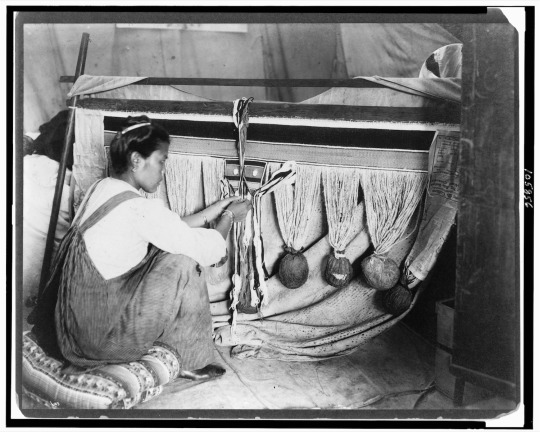
Chilkat woman weaving blanket, Alaska - Winter & Pond - 1910
102 notes
·
View notes
Photo

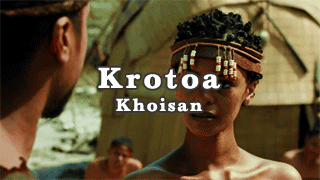
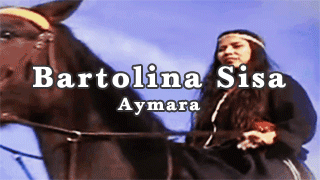
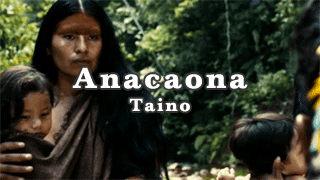

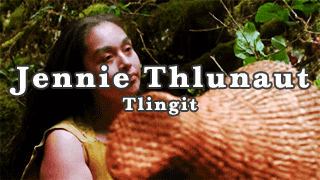

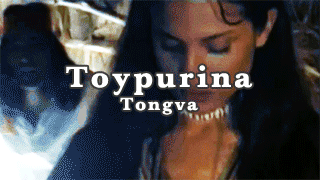
Historical Indigenous Women & Figures [4]:
Yukie Chiri: talented transcriber and translator of Yukar (Ainu epic tales). Growing up bilingual and speaking both Ainu and Japanese, Chiri would later catch the attention of a Linguist, who helped her to transcribe, preserve, and publish multiple Ainu epic tales.
Krotoa: Niece of Chief Autshumato, and Khoisan translator for the officials of the Dutch East India Company in South Africa during the founding of the Cape Colony. Though the exact circumstances of how are unknown, Krotoa came to work in the household of Jan Van Riebeeck and became known as “Eva”, and gained a higher position within the Dutch hierarchy as she additionally served as a trading agent, ambassador for a high ranking chief and peace negotiator in time of war. She exemplified the dependency the Dutch had on the Khoisan in her homeland.
Bartolina Sisa: Woman known for being a leader against Spanish colonialism in Peru, she often took up arms in uprisings alongside other Aymara and Quecha. She was the commander of the siege of La Paz, though she was eventually captured and killed. International Indigenous Women’s day is celebrated on the day of her death in her honor.
Anacaona: Also known as “Golden Flower”, she was a Poet among the Taino, who also served as her brother’s advisor as Chief. She took multiple efforts to try make peace with the Spanish in Haiti, including the arranging of marriages. She was eventually killed by the Spanish, but is remembered today as an intelligent and kind leader.
Matoaka: More famously known as “Pocahontas”, Matoaka was the favorite daughter of Wahunsenacah, Chief of the Powhatan confederacy. Though the story of her saving of John Smith is myth and fabricated by Smith, she did indeed partake in multiple efforts to attempt peace with the English. According to Powhatan oral history, She married the warrior Kocoum & had a child with him before being kidnapped and taken to England.
Jennie Thlunaut: Prolific Tlingit artist and weaver, who is credited with being a major factor in keeping Tlingit Chilkat weaving alive. Her works and artistry have been celebrated by many, including the Smithsonian Institution and Harvard Museum of Natural History.
Elsa Laula Renberg: Saami activist, who wrote and published a 30-page pamphlet in Swedish that spoke about Saami struggles and oppression, making her the first Saami woman to have her works published. She later founded the South Sámi Fatmomakka Association, which was the first Sámi activist organisation.
Toypurina: Famous for her opposition of Spanish missionaries & their forced assimilation of the Tongva in California, she was a medicine woman who participated in the planned 1785 rebellion against the Mission San Gabriel, where she recruited six of the eight villages which participated in the attack.
part [1], [2], [3]. Transphobes need not reblog and are not welcome on my posts.
#historyedit#history#native american history#asian history#indigenous history#women's history#ndn#indigenous#ainu#saami#justin's edits#edit: I have replaced Nandi with Krotoa due to the helpful advice of an anon who said it would be more appropriate!
825 notes
·
View notes
Photo

Chilkat Blanket, late 19th-early 20th century, Brooklyn Museum: Arts of the Americas
Northwest coast Chilkat blanket, two piled yarn of wool fiber and cedar bark. Trapezoid-like shape, side edges of beige weft-faced woven, possibly weft-twined. Upper and lower edges also beige in weft-faced plain weave. Broad bands of medium brown and yellow weft-faced plain weave enclose central dark brown field. Various geometric, stylized face and eye motifs in interlocking and slit tapestry techniques in beige, light yellow, olive green and dark brown on this dark brown field. Long fringes extend from lower edge, where wool yarn covering has worn away to show cedar bark interior in places. The design is the "Diving Whale" design with the head of whale located at bottom near the fringe, tail flukes near the top, side flukes near the head, all with eyes inside. The center body is indicated with a face representing the spirit of the animal. The whale is flanked by young raven designs. Weaving is thought to be problematic and the artist took many innovative liberties. Might not have had enough brown wool so did some basket twining techniques along the top and outlining areas such as the eyes. In one area near trout eyes at the bottom weaver had to change brown to another shade and then finally to green as not enough wool. Very loosely woven over all. Either has two different artist's signatures or again the artist didn't have enough dark brown to even complete the signature. Size: 53 x 68 1/2 in. (134.6 x 174 cm) Medium: Goat wool, commercial wool, cedar bark
https://www.brooklynmuseum.org/opencollection/objects/116689
44 notes
·
View notes
Photo

Curator's Choice: Reframing the Past with Meghann O’Brien and Elena Phipps
by Fowler Museum at UCLA Thu, April 8, 2021 11:00 AM – 12:00 PM PDT
from the website: Join us for a conversation with artist Meghann O’Brien & textile scholar Elena Phipps about Indigenous knowledge and creative practice.
About this Event
RSVP to receive link to join as the date nears.
Meghann O’Brien is a Haida and Kwakwaka’wakw artist whose Chilkat textiles are based on the knowledge and artistic practices of her ancestors. Her projects engage specialized techniques of basketry and weaving, and use mountain goat wool, cedar bark, and other earthly materials to connect to the rhythms and patterns of the natural world. With these materials, she explores issues related to Indigenous fashion and couture, reframing the past and applying it to present-day life. Join the Fowler for a conversation between Meghann O’Brien and textile scholar Elena Phipps about new ways of looking at Indigenous knowledge and creative practice in the realm of textile making.
Meghann O’Brien (b. 1982) is a Northwest Coast weaver from the community of Alert Bay, B.C. Her innovative approach to traditional art forms of basketry and Yelth Koo (Raven’s Tail) and Naaxiin (Chilkat) textile weaving creates a continuity between herself and her ancestors. Meghann now lives in Vancouver, B.C. and is currently exploring the intersection of Indigenous materials and techniques with the world of fashion and 3D printing. She travels globally to lecture and demonstrate her work, yet emphasizes the value of contributing to the contemporary ceremonial practices of the Haida and Kwakwakw’wakw people.
Elena Phipps focuses on the history of textile materials and techniques in cultural contexts. She was a textile conservator at the Metropolitan Museum of Art for 34 years and co-curated the award-winning textile exhibitions, The Colonial Andes: Tapestries and Silverwork 1430-1830 (2004), and The Interwoven Globe: Worldwide Textile Trade (2013). In 2013, she curated The Four-Selvaged Peruvian Cloth: Ancient Threads/New Directions for the Fowler Museum. Elena’s most recent publication is “Woven Brilliance” (Textile Museum Journal, 2021). She has served as President of the Textile Society of America (2011-14) and taught in UCLA’s Department of World Arts and Culture/Dance since 2011.
Curator’s Choice: Join curators for lively conversations about their passions and projects that inspire audiences to engage with different worldviews and find joy in the diversity of human experiences.
Image: David Koppe courtesy of Douglas Reynolds Gallery
11 notes
·
View notes
Photo

Blankets by Anna B Ehlers, master weaver from the Chilkat tribe in Alaska.
5 notes
·
View notes
Photo


Chloë Angus Fabric Facemasks
These masks are soft, durable, breathable, and antibacterial.
For every mask purchased, they will donate partial proceeds to the Downtown Eastside Women's Centre.
The Chilkat Print is an intergenerational collaboration between Coast Salish artist Wade Baker and his ancestor, master weaver Anislaga (Mary Ebbetts Hunt).
#plague doctor jokes#despite my tag for covid stuff#these are a great idea!#i live in vancouver and everyone here wears masks anyhow#and the dtes charity is in significant need#if you order other items from their store#you get a mask thrown in free anyhow#free shipping on canadian orders
48 notes
·
View notes
Photo

'Eagle Crest blanket' by Jennie Thlunaut, Tlingit artist, credited with keeping the art of Chilkat weaving alive and one of the most celebrated Northwest Coastal master weavers of the 20th century
28 notes
·
View notes
Text
[8/?]
A brief diversion for mountains:


There are fourteen mountains that rise 8,000 meters or higher. In 1950 a team lead by Maurice Herzog reached the summit of Annapurna 1, the first time humans ever climbed that high. This is not because it’s the easiest of the fourteen: it was shockingly dumb luck and devotion. Annapurna has killed more people than any mountain in history. And yet it’s dearly loved--we just can’t resist that murderously peaceful face in its soft shades of cream and blue.
Dior had that expedition on his mind a few years later when he designed the Annapurna gown, sandstone silk under clouds of sequins cut from mother-of-pearl.



The dress itself is a simple bell skirt falling just below the knee, nipped at the waist, the heavy silk gathered into rough creases at the shoulders and a sharply suggestive but modest neckline. Over it, there’s an open coat with a surprisingly soft shawl collar and yoke, the sleeves joined to the body well in from the point of the shoulder to create a roundness and a very full, imposing, but not architectural or unnatural silhouette.

There you go.
TJ Oshie
is a very handsome man.


This is not, like, the only important thing about him, but it has made this one my favorite part of the project. He has a gloriously heart-shaped face and smooth moon profile with that cute nose and cheekbones and eyes framed by crinkles and, lest we forget, great legs.

p.p1 {margin: 0.0px 0.0px 0.0px 0.0px; font: 12.0px 'Helvetica Neue'}
He’s the only one I would pick to wear Capitals red. He’s the guy the guys talk about as the heart of the team, and I am a sap.
He likes kinda big lines and bold color; I think about one of his 3-piece suits, and his plaids. He himself sometimes goes a bit too complex and crowds out his face--like I said about Holtby, when you have big expressive features they can blur. Negative space makes them more distinct. So I’m looking for a piece by a Native designer in red, with a simple shape, showing those calves.

After a year, what I’ve decided on is this red hourglass dress with mod white and black accents being modeled by Chilkat weaver and designer Meghann O’Brien. (I can’t tell you a ton about it because O’Brien is an academic fiber artist and, ironically, no fiber artist has ever been a whiz at web design, so I’m having challenges with that part of her blog. Her main work is woven ornaments like the leggings she’s wearing in this picture, which you can find wonderful closeups, process photos, and academic discussion of, if you’re interested in learning more.) The overall shape and shade of red can make it peppy, while the boatneck, slower curves of the detailing, and the important colors of red and white and black can make it more soothing, grounding, and mature.
As you’ll remember Ovi is wearing this absolute island of over-saturated blue.

I did A Theme
45 notes
·
View notes
Link
Sara Jacobsen, 19, grew up eating family dinners beneath a stunning Native American robe.
Not that she gave it much thought. Until, that is, her senior year of high school, when she saw a picture of a strikingly similar robe in an art history class.
The teacher told the class about how the robe was used in spiritual ceremonies, Sara Jacobsen said. "I started to wonder why we have it in our house when we’re not Native American."
She said she asked her dad a few questions about this robe. Her dad, Bruce Jacobsen, called that an understatement.
"I felt like I was on the wrong side of a protest rally, with terms like 'cultural appropriation' and 'sacred ceremonial robes' and 'completely inappropriate,' and terms like that," he said.
"I got defensive at first, of course,” he said. “I was like, 'C’mon, Sara! This is more of the political stuff you all say these days.'"
But Sara didn't back down. "I feel like in our country there are so many things that white people have taken that are not theirs, and I didn’t want to continue that pattern in our family," she said.
The robe had been a centerpiece in the Jacobsen home. Bruce Jacobsen bought it from a gallery in Pioneer Square in 1986, when he first moved to Seattle. He had wanted to find a piece of Native art to express his appreciation of the region.
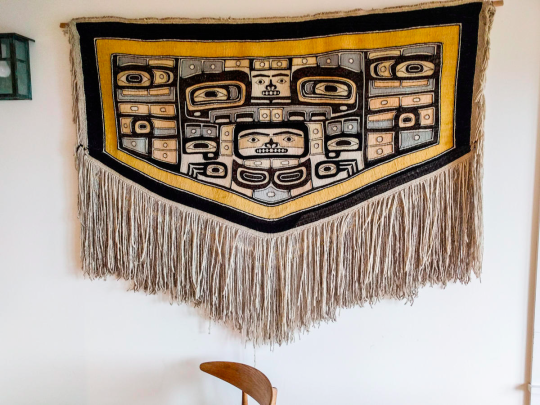
The Chilkat robe that hung over the Jacobsen dining room table for years. Credit Courtesy of the Jacobsens
"I just thought it was so beautiful, and it was like nothing I had seen before," Jacobsen said.
The robe was a Chilkat robe, or blanket, as it’s also known. They are woven by the Tlingit, Haida and Tsimshian peoples of Alaska and British Columbia and are traditionally made from mountain goat wool. The tribal or clan origin of this particular 6-foot-long piece was unclear, but it dated back to around 1900 and was beautifully preserved down to its long fringe.
"It's a completely symmetric pattern of geometric shapes, and also shapes that come from the culture," like birds, Jacobsen said. "And then it's just perfectly made — you can see no seams in it at all.”
Jacobsen hung the robe on his dining room wall.
After more needling from Sara, Jacobsen decided to investigate her claims. He emailed experts at the Burke Museum, which has a huge collection of Native American art and artifacts.
"I got this eloquent email back that said, 'We’re not gonna tell you what to go do,' but then they confirmed what Sara said: It was an important ceremonial piece, that it was usually owned by an entire clan, that it would be passed down generation to generation, and that it had a ton of cultural significance to them."
Jacobsen says he was a bit disappointed to learn that his daughter was right about his beloved Chilkat robe. But he and his wife Gretchen now no longer thought of the robe as theirs. Bruce Jacobsen asked the curators at the Burke Museum for suggestions of institutions that would do the Chilkat robe justice. They told him about the Sealaska Heritage Institute in Juneau.
When Jacobsen emailed, SHI Executive Director Rosita Worl couldn't believe the offer. "I was stunned. I was shocked. I was in awe. And I was so grateful to the Jacobsen family.”
Worl said the robe has a huge monetary value. But that's not why it’s precious to local tribes.
"It’s what we call 'atoow': a sacred clan object," she said. "Our beliefs are that it is imbued with the spirit of not only the craft itself, but also of our ancestors. We use [Chilkat robes] in our ceremonies when we are paying respect to our elders. And also it unites us as a people."
Since the Jacobsens returned the robe to the institute, Worl said, master weavers have been examining it and marveling at the handiwork. Chilkat robes can take a year to make – and hardly anyone still weaves them.
"Our master artist, Delores Churchill, said it was absolutely a spectacular robe. The circles were absolutely perfect. So it does have that importance to us that it could also be used by our younger weavers to study the art form itself."
Worl said private collectors hardly ever return anything to her organization. The federal Native American Graves Protection and Repatriation Act requires museums and other institutions that receive federal funding to repatriate significant cultural relics to Native tribes. But no such law exists for private collectors.

Bruce and Gretchen Jacobsen hold the Chilkat robe they donated to the Sealaska Heritage Institute as Joe Zuboff, Deisheetaan, sings and drums and Brian Katzeek (behind robe) dances during the robe's homecoming ceremony Saturday, August 26, 2017. Credit NOBU KOCH / SEALASKA HERITAGE INSTITUTE
Worl says the institute is lobbying Congress to improve the chances of getting more artifacts repatriated. "We are working on a better tax credit system that would benefit collectors so that they could be compensated," she said.
Worl hopes stories like this will encourage people to look differently at the Native art and artifacts they possess.
The Sealaska Heritage Institute welcomed home the Chilkat robe in a two-hour ceremony over the weekend. Bruce and Gretchen Jacobsen traveled to Juneau to celebrate the robe's homecoming.
#native#chilkat#native american#sealaska heritage institute#joe zuboff#diesheetaan#brian katzeek#Delores Churchill#rosita worl#culture#omg the story had a happy ending??? wow#could focus less on the altruism of the white people but yeah#shi#indigenous
89K notes
·
View notes
Photo

Had a real nice visit with Pearl Innis and her husband Clarence ! Pearl is a amazing Chilkat Weaver ! All ways nice to meet other artists #artstudio #bcfirstnations #westcoastnativeart #artstudio #artforsale #nativeartists #vancouver #britishcolumbia #canada #missionbc #chilkatwraver https://www.instagram.com/p/Bv7BxE_Ala0/?utm_source=ig_tumblr_share&igshid=1b9s8c9gvcios
#artstudio#bcfirstnations#westcoastnativeart#artforsale#nativeartists#vancouver#britishcolumbia#canada#missionbc#chilkatwraver
1 note
·
View note